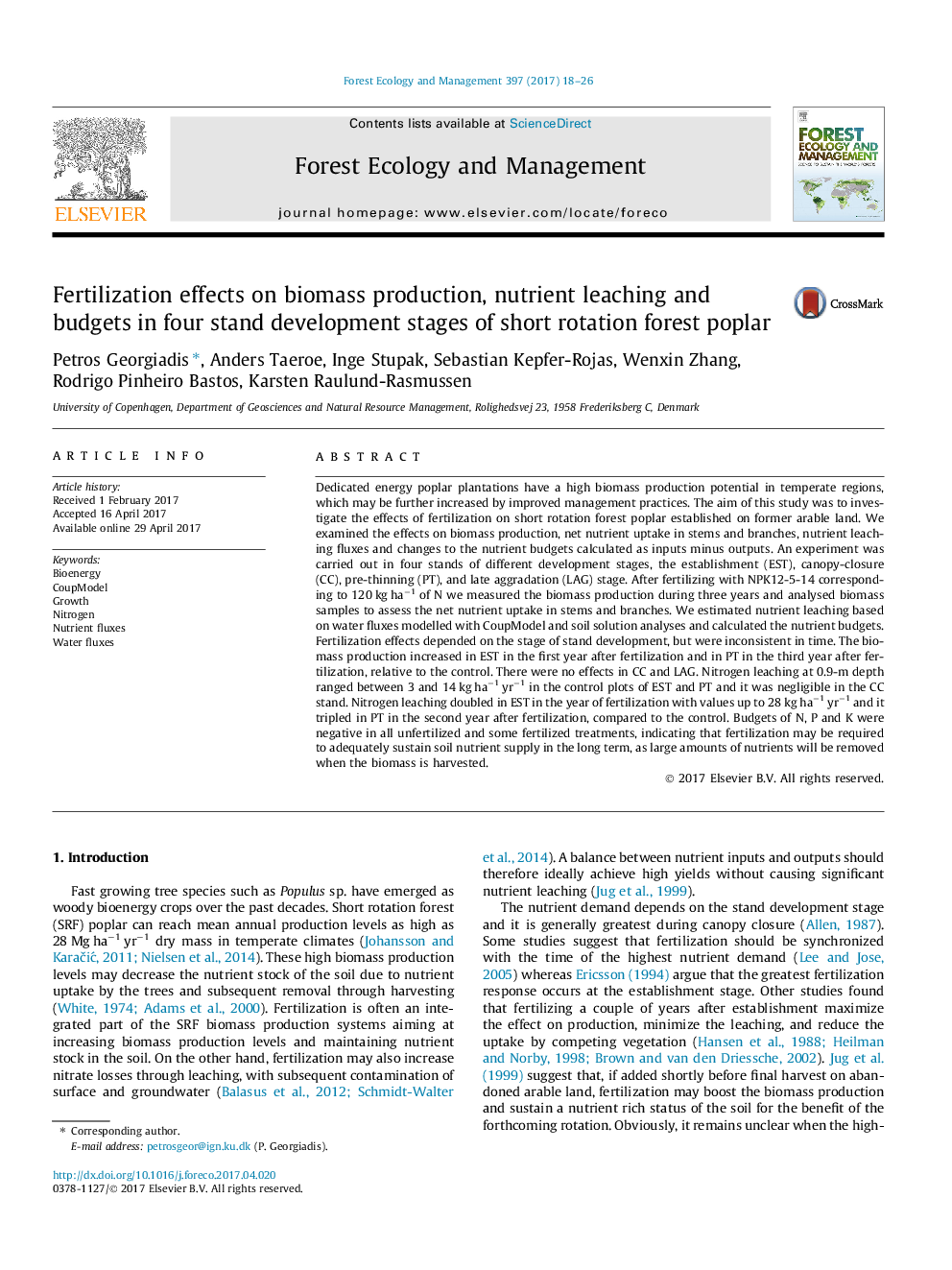| Article ID | Journal | Published Year | Pages | File Type |
|---|---|---|---|---|
| 6459341 | Forest Ecology and Management | 2017 | 9 Pages |
â¢Poplar was fertilized in four development stages and its effects were examined.â¢Fertilization increased biomass during the stages of establishment and pre-thinning.â¢Fertilization led to increased Nitrogen leaching in nutrient rich sites.â¢The responses to fertilization were not synchronized to the stages of greatest demand.
Dedicated energy poplar plantations have a high biomass production potential in temperate regions, which may be further increased by improved management practices. The aim of this study was to investigate the effects of fertilization on short rotation forest poplar established on former arable land. We examined the effects on biomass production, net nutrient uptake in stems and branches, nutrient leaching fluxes and changes to the nutrient budgets calculated as inputs minus outputs. An experiment was carried out in four stands of different development stages, the establishment (EST), canopy-closure (CC), pre-thinning (PT), and late aggradation (LAG) stage. After fertilizing with NPK12-5-14 corresponding to 120 kg haâ1 of N we measured the biomass production during three years and analysed biomass samples to assess the net nutrient uptake in stems and branches. We estimated nutrient leaching based on water fluxes modelled with CoupModel and soil solution analyses and calculated the nutrient budgets. Fertilization effects depended on the stage of stand development, but were inconsistent in time. The biomass production increased in EST in the first year after fertilization and in PT in the third year after fertilization, relative to the control. There were no effects in CC and LAG. Nitrogen leaching at 0.9-m depth ranged between 3 and 14 kg haâ1 yrâ1 in the control plots of EST and PT and it was negligible in the CC stand. Nitrogen leaching doubled in EST in the year of fertilization with values up to 28 kg haâ1 yrâ1 and it tripled in PT in the second year after fertilization, compared to the control. Budgets of N, P and K were negative in all unfertilized and some fertilized treatments, indicating that fertilization may be required to adequately sustain soil nutrient supply in the long term, as large amounts of nutrients will be removed when the biomass is harvested.
